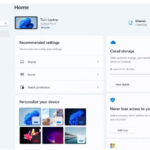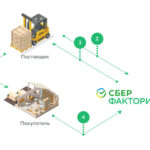Год выпуска: 2011
Производитель: CBT Nuggets
Автор: Jeremy Cioara
Продолжительность: 19:05:50
Тип раздаваемого материала: Видеоурок
Язык: Английский
Стоимость: 1999 рублей
Описание
The CCNA Voice training is for anyone who would like to begin exploring Cisco Voice over IP (VoIP) technology. Voice over IP is now the “hot topic” – it’s no longer bleeding edge. Businesses around the world are realizing the cost savings, efficiency, and just plain “coolness” of combining their telephone and data networks into one unified system. Today, it’s rare to find a company not using VoIP! That said, there is a massive shortage of qualified people who can implement and support VoIP systems.
Just like the original Cisco CCNA, CCNA Voice hits the high points of the major VoIP technologies common in Cisco voice networks. These include:
• Cisco Unified Communication Manager (CUCM – aka CallManager) • Cisco Unified Communication Manager Express (CME) • Cisco Unity Connection • Cisco Presence
So, in one series, you’re learning to work with four major products, which looks awesome on a resume!
This series goes far beyond the Cisco Certification exam. Jeremy adds extra material on the core products you deal with every day in the real-world: CUCM and CME. Of course, he carefully notes this to keep you from studying too much information if you’re preparing for the certification exam. Expect to walk away with the best of exam prep as well as real world skills!
Once someone has gone through this training, they’ll be a part of a small, select group of people who really understand VoIP technology. They’ll also be able to manage day-to-day operations of the VoIP system in small, mid-size, and large businesses. Businesses everywhere are looking for a person who can handle their basic routing & switching functions (CCNA) along with their voice network (CCNA Voice).
[wpspoiler name="Подробное описание" ]
1. CCNA Voice: Certification and Getting the Most from this Series (00:34:56)
With every new program, there is typically an included "Read Me First" text file. In the same sense, consider this nugget the "Watch Me First" of the series. This Nugget presents the strategies you can use for getting the most from the series, changes to the Cisco certification program, and the ideal CCNA Voice lab environment.
2. Welcome to VoIP: Voice in a Packet...What's the Big Deal? (00:26:48)
The world of voice technology is changing...but why? This Nugget is focused on explaining the merge of voice, video, and data, why a business would want to use VoIP, and the phases of migration to VoIP.
3. Unified Solutions Overview: Cisco CME and CUCM (00:24:29)
The two core call processing systems offered by Cisco are Communication Manager Express (CME) and Cisco Unified Communications Manager (CUCM). This Nugget discusses an overview of each product and fills in the "what do I buy?" questions.
4. Unified Solutions Overview: Cisco Unity Connection and Unified Presence (00:18:20)
Cisco Unity Connection and Unified Presence provide the voicemail and monitoring supplementary services on your voice network. In this Nugget, Jeremy provides an overview of each product.
5. Historic Voice: Analog Signaling (00:32:46)
VoIP networks are the "new thing" of network technology...which implies that there is an "old thing" still in existence. That "old thing" is analog and digital communication technology. Since VoIP networks must integrate tightly with the legacy voice world, a good understanding of analog and digital is necessary. In this Nugget, Jeremy explores the properties of analog connectivity and signaling.
6. Historic Voice: Digital Signaling (00:24:44)
Moving on in the legacy voice realm, this nugget explains digital connections and the extremely important process of converting analog communication to digital.
7. Modern Voice: VoIP Foundations (00:39:46)
The name doesn't lie - this Nugget truly sets the foundation for the rest of the series! Here, Jeremy discusses three major topics: call processing models (centralized, distributed), key voice protocols (H.323, MGCP, SIP), and voice deployment models (single site, central site, distributed).
8. Network Foundations: Preparing the Infrastructure for VoIP (00:44:25)
A Cisco VoIP network is only as good as its foundation. In order to support reliable, high-quality voice traffic, the network infrastructure must support new, key features. This Nugget specifically focuses on Power over Ethernet (PoE) and Voice VLAN concepts and configurations.
9. Network Foundations: Preparing the Infrastructure for VoIP, Part 2 (00:39:48)
This Nugget continues the discussion of the network infrastructure by exploring the Cisco IP phone boot process, IP phone DHCP support, and the Network Time Protocol (NTP) implementation.
10. Cisco CME: Getting Familiar with Administration (00:21:19)
The main hindrance to learning a new product is the "not knowing where to start" feeling. In this Nugget, Jeremy walks through the methods you can use to get started in managing your CME voice system.
11. Cisco CME: Ephones and Ephone-DNs (00:29:43)
As you might imagine, most of your focus in configuring a new VoIP system is managing the phones. Ephones and Ephone-DNs are CME's objects that tie directly to the Cisco IP Phone configuration. This initial Ephone Nugget covers the core Ephone/Ephone-DN configuration.
12. Cisco CME: Ephones and Ephone-DNs, Part 2 (00:42:24)
The Ephone fun continues as Jeremy discusses "advanced" phone configuration options. In here, you'll learn the many possibilities of the "button" command, shared line/overlay configurations, and auto-registration.
13. Cisco CME: Management using the Cisco Configuration Professional (00:24:14)
Cisco's latest GUI-based utility to manage their routers is called Cisco Configuration Professional (CCP). This Nugget explores how you can manage the CME router using this sweet utility.
14. Cisco CME: Management using the Cisco Configuration Professional, Part 2 (00:42:29)
The CCP madness continues as Jeremy discusses the configuration of the core CME phone features using CCP.
15. Gateways and Trunks: Understanding Voice CODECs (00:41:09)
Now that you have configured the CME for local communication, it's time to reach out to the outside world with our voice gateway and trunk configurations. This initial Nugget focuses around a discussion of audio coder/decoders (CODECs) and determining bandwidth requirements for VoIP communication.
16. Gateways and Trunks: Connecting to Other Voice Systems (00:35:43)
CME can connect to two types of voice networks through gateways and trunks: legacy voice (analog and digital) and VoIP. This Nugget discusses the methods and protocols you can use when configuring these connections.
17. Gateways and Trunks: Understanding and Configuring Dial Peers (00:43:59)
Dial-peers are used to define the "routing table for voice traffic." This Nugget discusses the core concepts behind dial-peers (call legs) and the base configuration of Plain Old Telephone Service (POTS) and VoIP dial-peers.
18. Gateways and Trunks: Understanding and Configuring Dial Peers, Part 2 (00:41:51)
The dial-peer discussion continues as Jeremy explores common dial-peer wildcards and the process used by routers to match inbound and outbound dial-peers to correctly route calls.
19. Gateways and Trunks: Manipulating Dialed Digits (00:27:12)
There are many times in the configuration of a voice network where you will need to modify dialed number information. That's the primary topic of this Nugget: digit manipulation. In here, Jeremy presents multiple practical scenarios and the digit manipulation techniques you can use to meet customer requirements.
20. Gateways and Trunks: Implementing Class of Restriction (COR) (00:24:46)
No, it's NOT okay if you call that number! Class of Restriction (COR) allows you to place restrictions on dialed numbers in the CME environment. In this Nugget, Jeremy works through the concepts and multiple practical examples of using COR.
21. Gateways and Trunks: Understanding QoS (00:38:03)
Without Quality of Service (QoS), data traffic can quickly trample your voice network to smithereens. This Nugget explores the QoS tools you can use to fight the data villains.
22. Cisco CUCM: Administration Overview (00:26:35)
The main hindrance to learning a new product is the "not knowing where to start" feeling. In this Nugget, Jeremy walks through the methods you can use to get started in managing your CUCM voice system.
23. Cisco CUCM: Supporting End Devices (00:36:16)
What's a voice network without phones?!? In this nugget, Jeremy walks through the methods you can use to add phones to your CUCM system along with the configuration of Device Pools.
24. Cisco CUCM: Supporting End Devices, Part 2 (00:39:12)
The phone configuration continues as Jeremy adds phones manually, through auto-registration, and using the Bulk Administration Tool (BAT).
25. Cisco CUCM: Supporting End Users (00:23:01)
In the CUCM environment, IP phones comprise just one of your management tasks; user management has also crept into your scope of work! This Nugget discusses the benefits of using user accounts with the phone system, the difference between End Users and Application Users, and finally the process to configure user accounts in your CUCM cluster.
26. Cisco CUCM: Supporting End Users, Part 2 (00:44:24)
The CUCM user management continues! In this Nugget, Jeremy demonstrates how to use the Bulk Administration Tool (BAT) to manage users by the truckload. After this, he configures LDAP Synchronization and Authentication to link the CUCM and Active Directory databases. Finally, Jeremy discusses the configuration of user groups, roles, and privileges to create other CUCM administrators.
27. Cisco CUCM: Understanding Dial Plan (00:43:55)
Specifically designated as the Most Valuable Part (MVP) of the series, this Nugget discusses the core route plan structure and configuration. By time you're done here, you'll be putting together the Route Patterns, Route Lists, and Route Groups into a congruent system.
28. Cisco CUCM: Partitions and Calling Search Spaces (00:36:24)
Partitions and Calling Search Spaces (CSSs) are by far the most complex topic in the CUCM route plan architecture. This Nugget helps you to understand the purpose and use of Partitions and CSSs and walks through practice scenarios which employs them to accomplish specific objectives.
29. Cisco CUCM: CUCM Feature Overview (00:47:59)
It's CUCM feature madness! This Nugget dives into the common and not-so-common CUCM features: Call Park, Call Pickup, Shared Lines, Do not Disturb, Call Back, Barge, and XML Services.
30. Cisco Unity Connection: Working with CUC (00:45:25)
What's a voice network without voice mail? This Nugget focuses on the core concepts of Cisco Unity Connection (CUC), CUCM and CUC integration, and the configuration of voice mailboxes on the CUC server.
31. Cisco Unified Presence: Overview and Communication (00:30:15)
So you've got a phone system. You have voice mail. How can you make it even better? Add Presence! In this Nugget, Jeremy talks through the operation and configuration of the Cisco Unified Presence Server (CUPS) and its integration with CUCM.
32. Voice Troubleshooting: Overview and Cisco CME (00:40:29)
Let the troubleshooting begin! In this Nugget, Jeremy gives a heartfelt plea for a troubleshooting methodology (you'll see what we mean), then walks through the two most common troubleshooting spots for CME: phone registration and dial plans.
33. Voice Troubleshooting: Cisco CUCM (00:33:01)
All eyes turn to the CUCM server as the troubleshooting Nuggets continue. Because CUCM troubleshooting can be a massive topic, Jeremy focuses on the core topics: troubleshooting registration issues, generating reports, Cisco Real-Time Monitoring Tool (RTMT) and Disaster Recovery System (DRS).[/wpspoiler]



